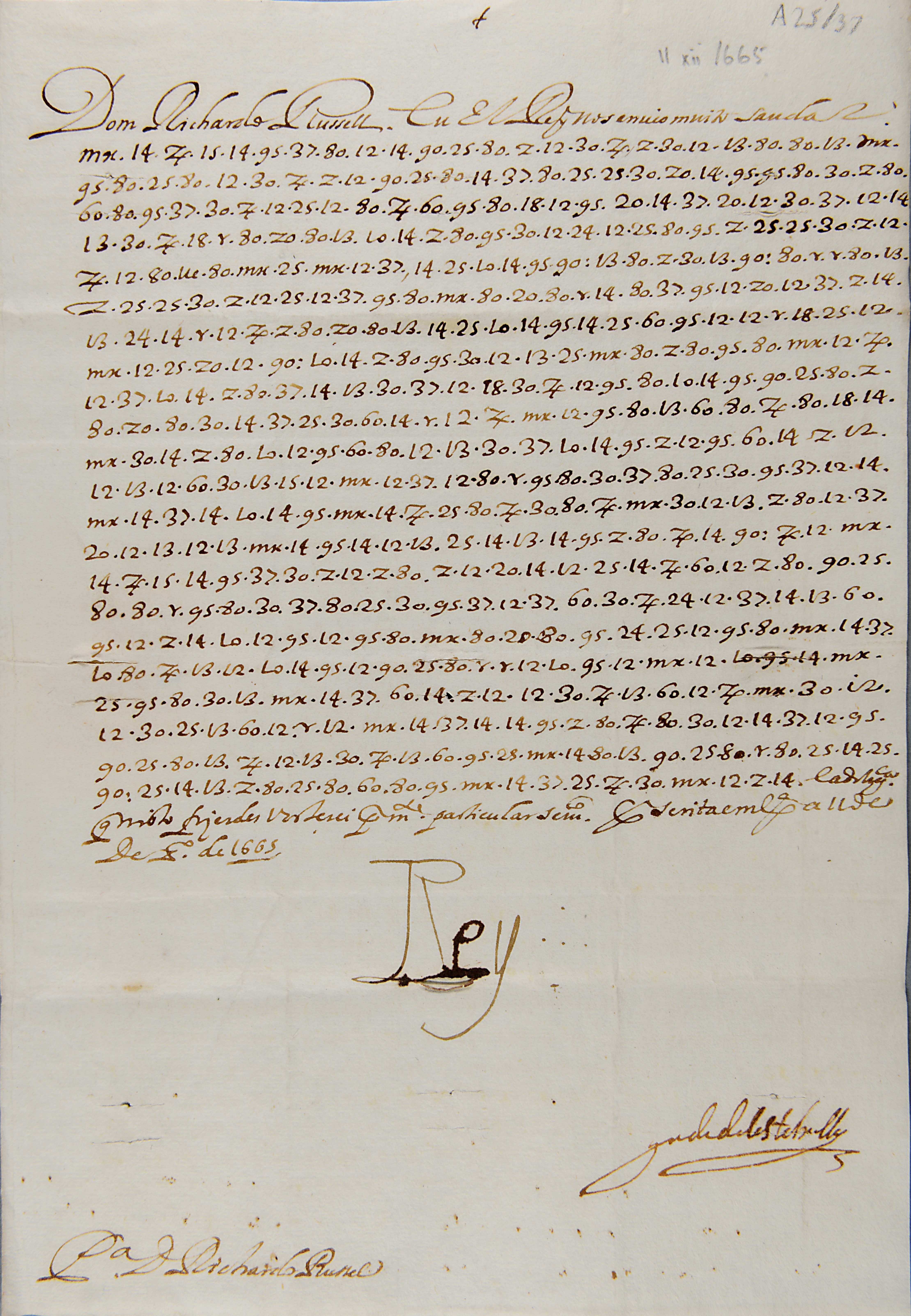
As part of its internationally significant archive collections, the holdings at Ushaw College Library include the papers of the English College of SS Peter and Paul in Lisbon. Founded by Pedro Coutinho in 1624 to (illegally) supply priests for the English mission, Lisbon College became one of the most important seminaries on the continent. It survived until 1973, at which point its archives and a small library were transferred to Ushaw College.
A number of the Lisbon College collections include the personal papers of individuals with a close connection to the seminary. Bishop Richard Russell is a notable example. As an alumnus and later procurator of the college, Russell’s career subsequently flourished as secretary to the Queen of Portugal, playing a leading role in the negotiations surrounding the marriage treaty of King Charles II and Catherine of Braganza. Within his collection of papers, which include early drafts of very personal letters sent by Charles, one item in particular stands out. At first glance, this rather unattractive-looking document appears to be nothing more than a random series of letters and numbers. These letters and numbers, however, are the code of a secret letter from 1665 relating to Catherine of Braganza’s dowry and specifically the ceding of Bombay by Portugal to the English as part of the negotiations. It is an immensely valuable document, pertaining as it does to the commencement of the British Empire in India.
The letter, at least in terms of its general subject matter, is relatively well-known among a select group of academics. However, recent work undertaken by Ana Dias, a Durham postgraduate student in the History Department and Dr Antonio Lazaro, a specialist in Portuguese cyphers, has shed more light on this fascinating document. Ana’s transcription and translation of the letter reveals that these Anglo-Portuguese negotiations were not as straightforward as first supposed, with the English harbouring reservations about obtaining Bombay because of its likely impact on diplomatic relations with the Dutch. The writer of the letter is Charles’s brother, James, who succeeded Charles to the throne in 1685 but at this time held the post of Lord High Admiral. James wanted the recipient to ignore these doubts and, by a direct order of the king, arrange for Bombay to be handed over.
The contribution of Dr Lazaro in examining the cyphers in this letter also adds an extra dimension to our understanding of seventeenth century European diplomacy. Dr Lazaro suggests that the cypher used is a very archaic and basic one, being little more than a simple mono-alphabetic cypher of substitution. He argues that the letter could have easily been intercepted and interpreted which, given what was at stake in these negotiations and its likely reception by other European powers, seems a rather lax approach to European diplomacy!